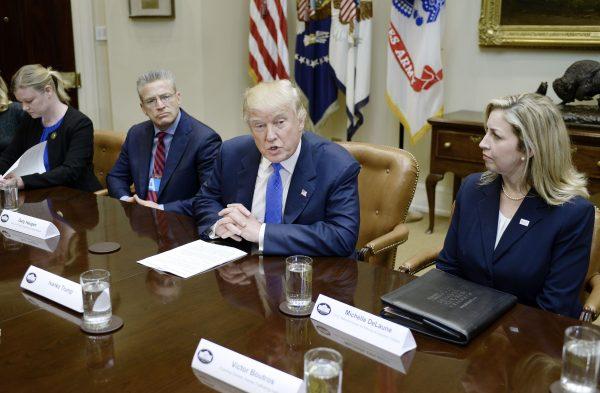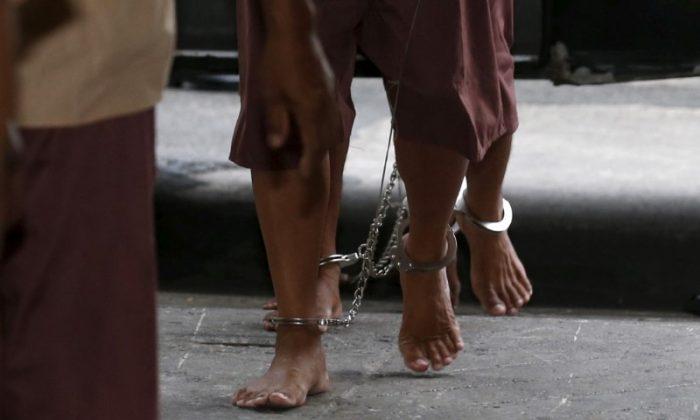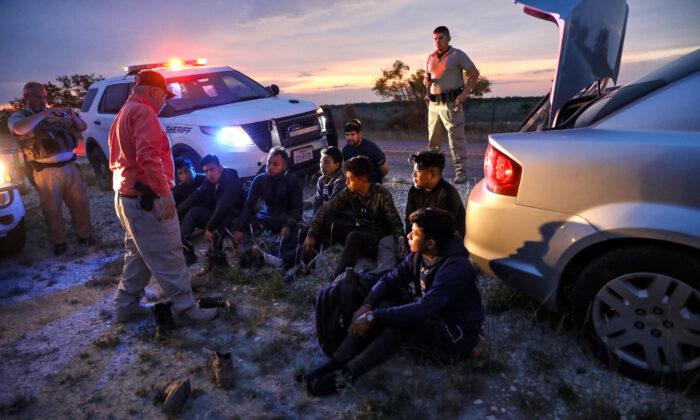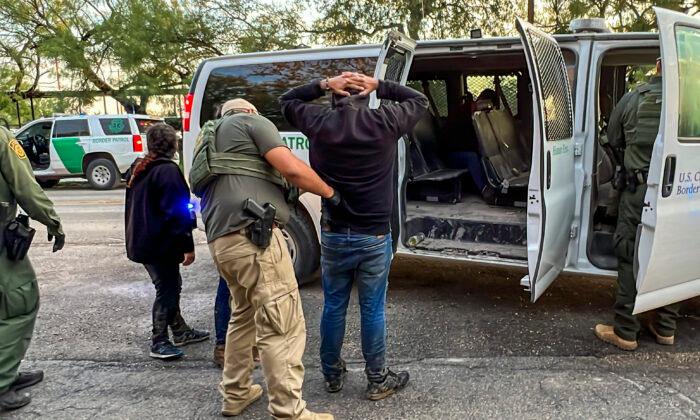WASHINGTON—An estimated 25 million people are currently victims of human trafficking for sex and labor, according to the White House.
“Human traffickers prey on their victims by promising a life of hope and greater opportunity, while delivering only enslavement,” said President Donald Trump on Dec. 29, while proclaiming January as National Slavery and Human Trafficking Prevention Month.
He called human trafficking a “sickening crime at odds with our very humanity.”
“Instead of delivering people to better lives, traffickers unjustifiably profit from the labor and toil of their victims, whom they force—through violence and intimidation—to work in brothels and factories, on farms and fishing vessels, in private homes and in countless industries,” Trump said.
Last February, Trump signed an executive order urging law enforcement to use all resources to dismantle and prosecute any transnational criminal organizations, cartels, and other groups that are involved in trafficking.
“These groups are drivers of crime, corruption, violence, and misery,” Trump said.
His administration has taken other steps to prevent labor and sex trafficking, including the formation of an interagency task force to monitor and combat human trafficking. The task force works closely with other nations, businesses, civil society organizations, and survivors of human trafficking.
This year, the Department of Labor released a mobile app that supports private-sector efforts to eradicate forced labor from global supply chains.
And in September, the State Department directed $25 million of funds to the Global Fund to End Modern Slavery.
The fund’s website says that, including all forms of slavery, a total of about 40.3 million people around the world are victims, and that modern slavery generates $150 billion in criminal profits each year.
The profits from human trafficking are second only to drug trafficking as the most profitable form of transnational crime, according to the Department of Homeland Security (DHS).
“Human trafficking is a hidden crime, as victims rarely come forward to seek help because of language barriers, fear of the traffickers, and/or fear of law enforcement,” the DHS website states.
“Traffickers use force, fraud, or coercion to lure their victims and force them into labor or commercial sexual exploitation. They look for people who are susceptible for a variety of reasons, including psychological or emotional vulnerability, economic hardship, lack of a social safety net, natural disasters, or political instability. The trauma caused by the traffickers can be so great that many may not identify themselves as victims or ask for help, even in highly public settings.”

This January, Trump will sign into law two acts that passed almost unanimously in Congress the week before Christmas—S.1536, the Combating Human Trafficking in Commercial Vehicles Act, and S.1532, the No Human Trafficking on Our Roads Act.
 “These bills will keep those who commit trafficking offenses from operating commercial vehicles, improve anti-human trafficking coordination within federal agencies and across state and local governments, and improve efforts to recognize, prevent, and report human trafficking,” Trump said in the proclamation.
“These bills will keep those who commit trafficking offenses from operating commercial vehicles, improve anti-human trafficking coordination within federal agencies and across state and local governments, and improve efforts to recognize, prevent, and report human trafficking,” Trump said in the proclamation.Trump also said it was critical for Americans to learn how to identify and help combat enslavement.
“This is especially important for those who are most likely to encounter the perpetrators of slavery and their victims, including health care providers, educators, law enforcement officials, and social services professionals,” he said.
He said Americans can learn to recognize the signs of human trafficking and how to report suspected instances through the DHS’s Blue Campaign.
The campaign outlines key indicators of human trafficking and breaks down common myths and misconceptions.
“By taking steps to become familiar with the telltale signs of traffickers or the signals of their victims, Americans can save innocent lives,” Trump said.






Friends Read Free